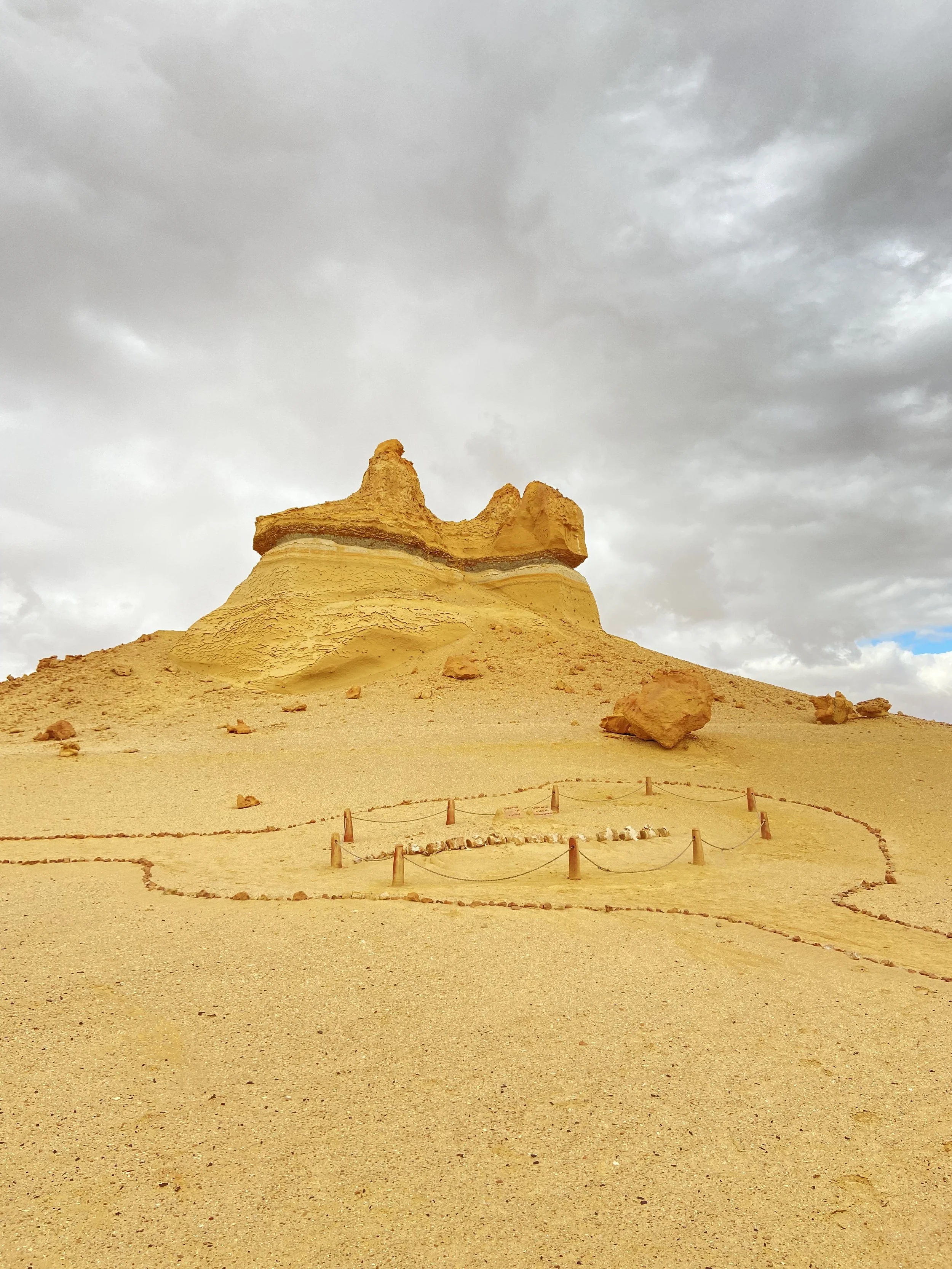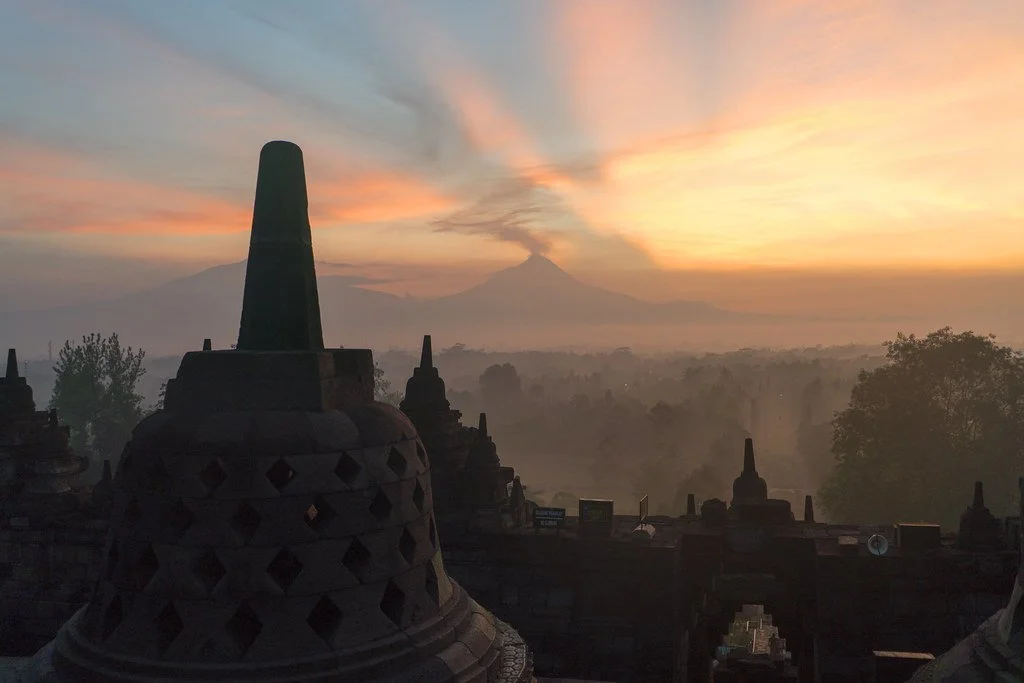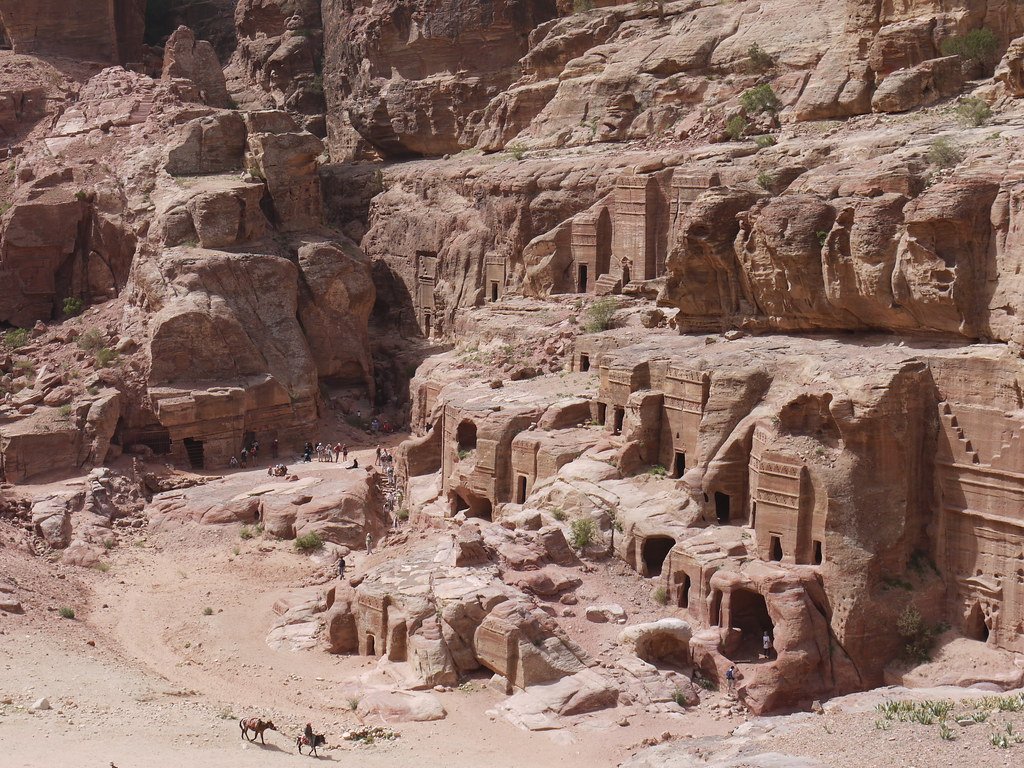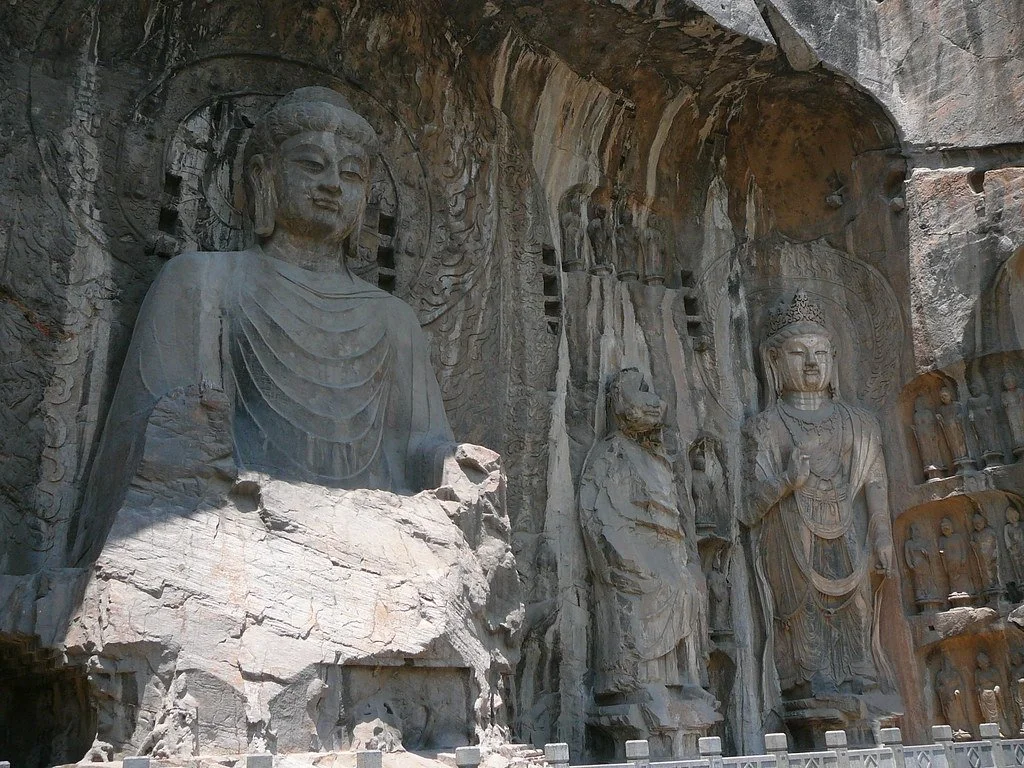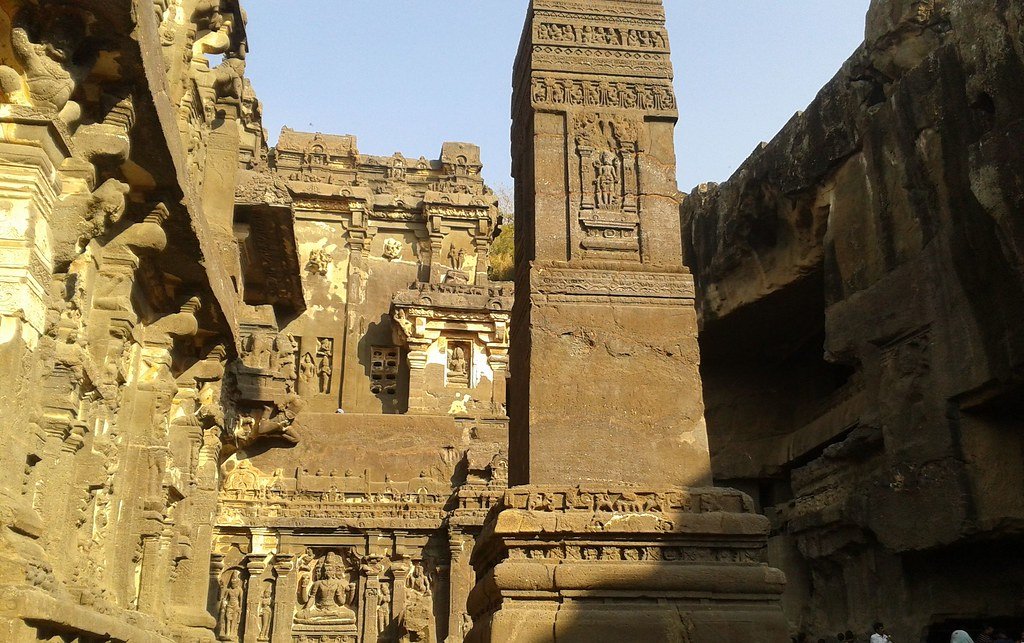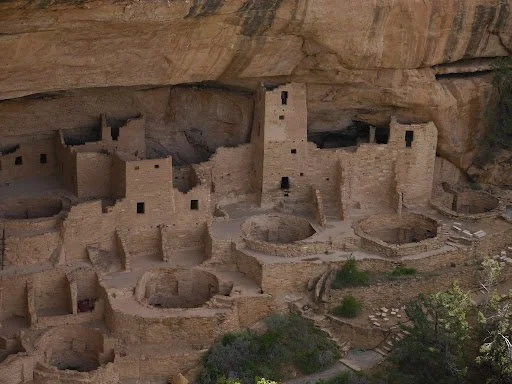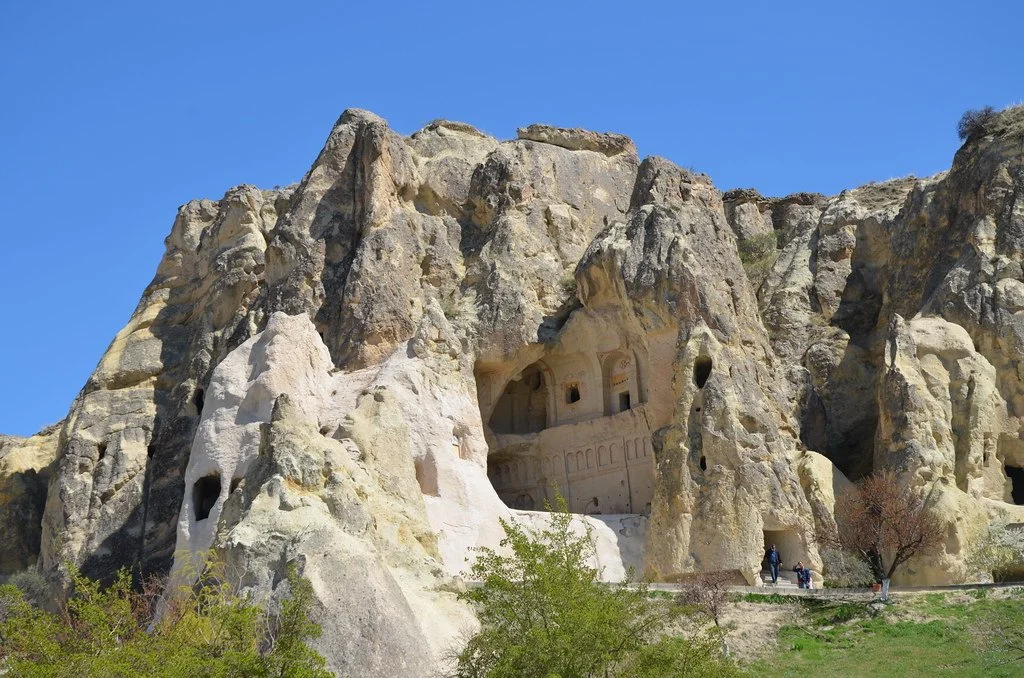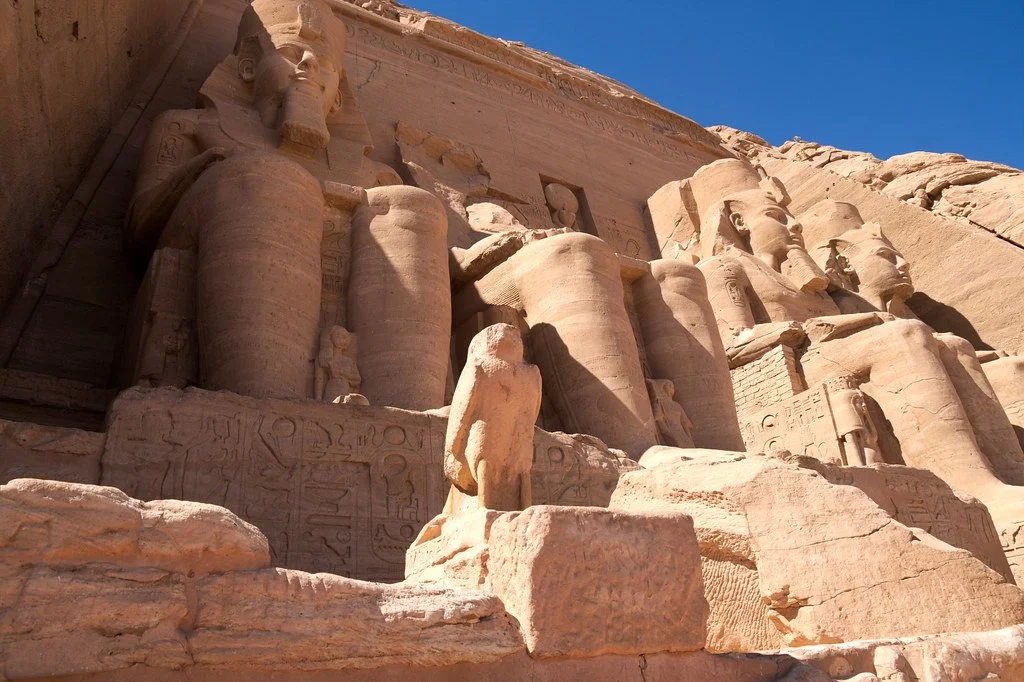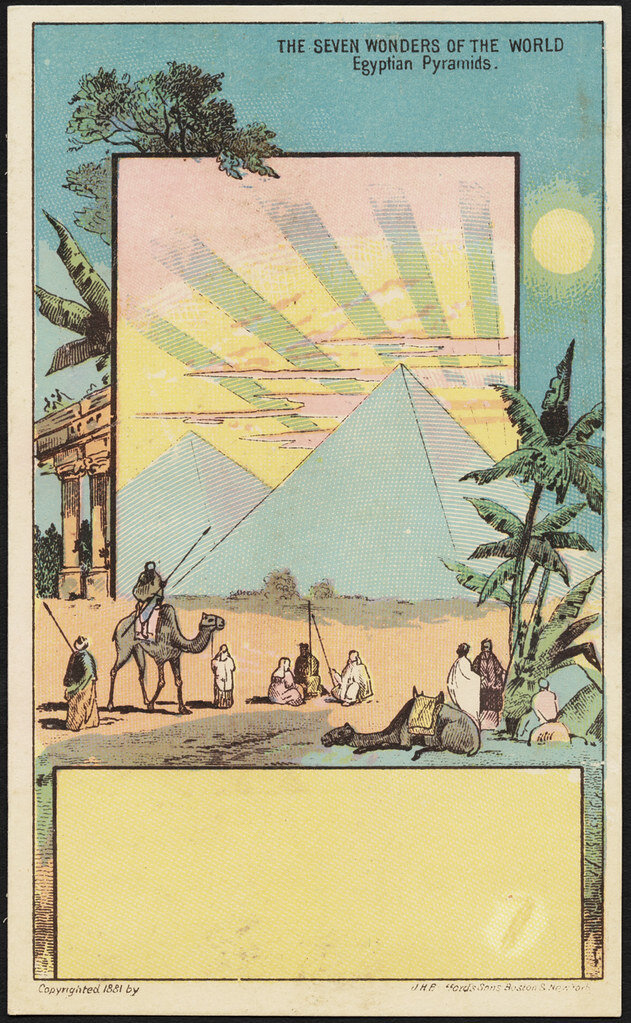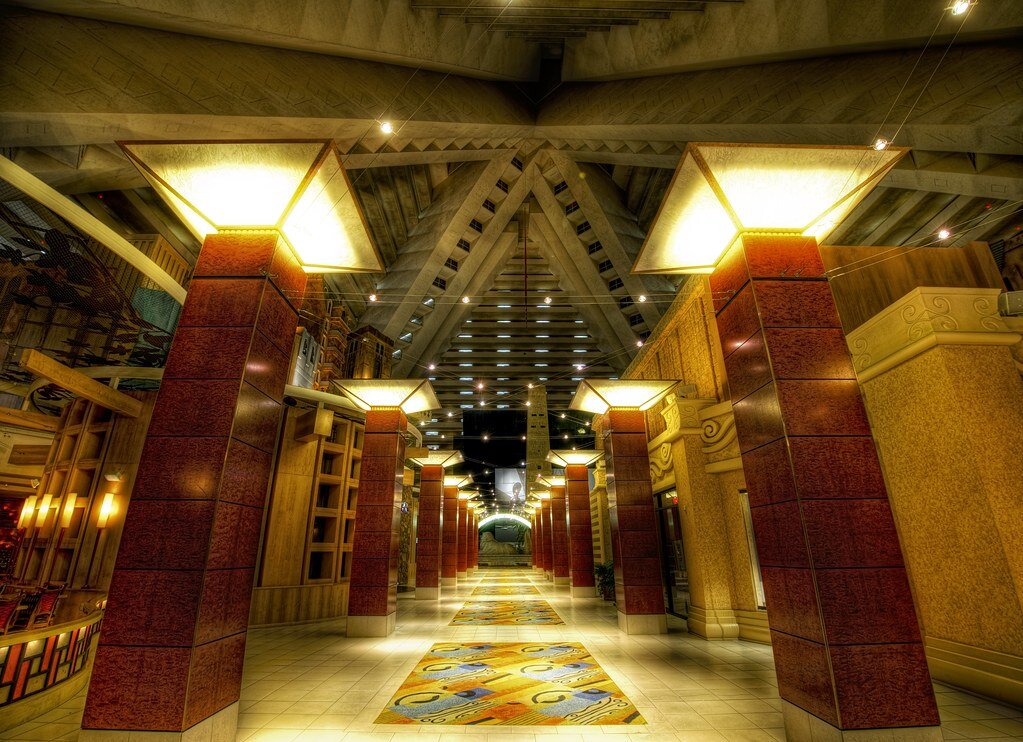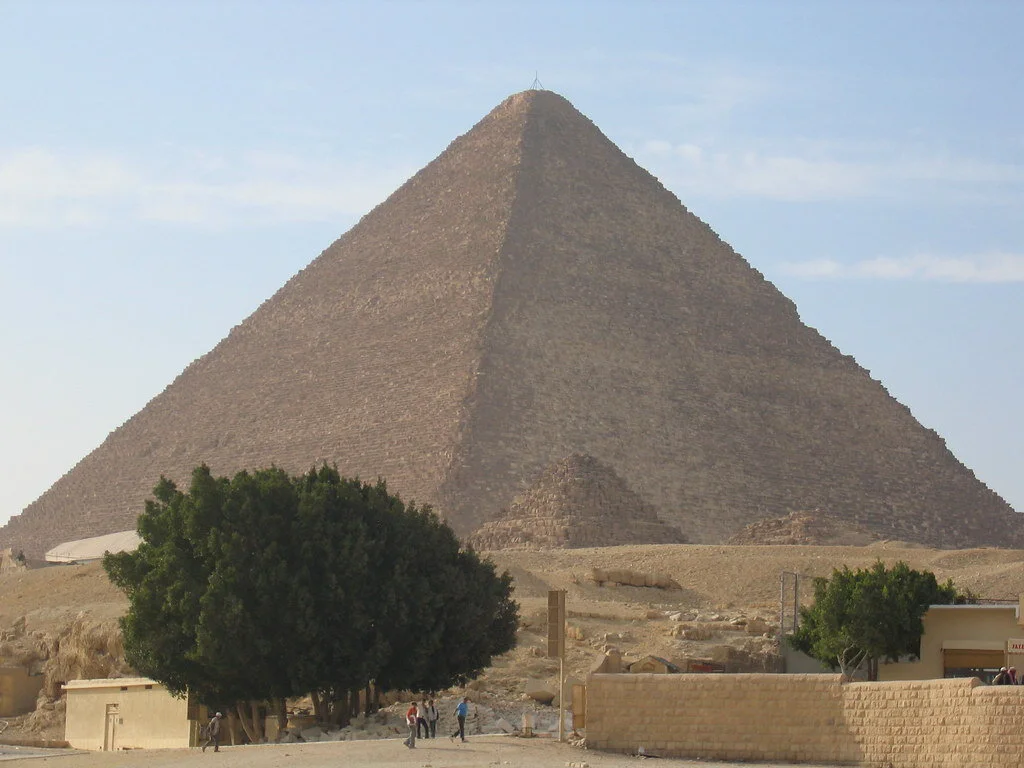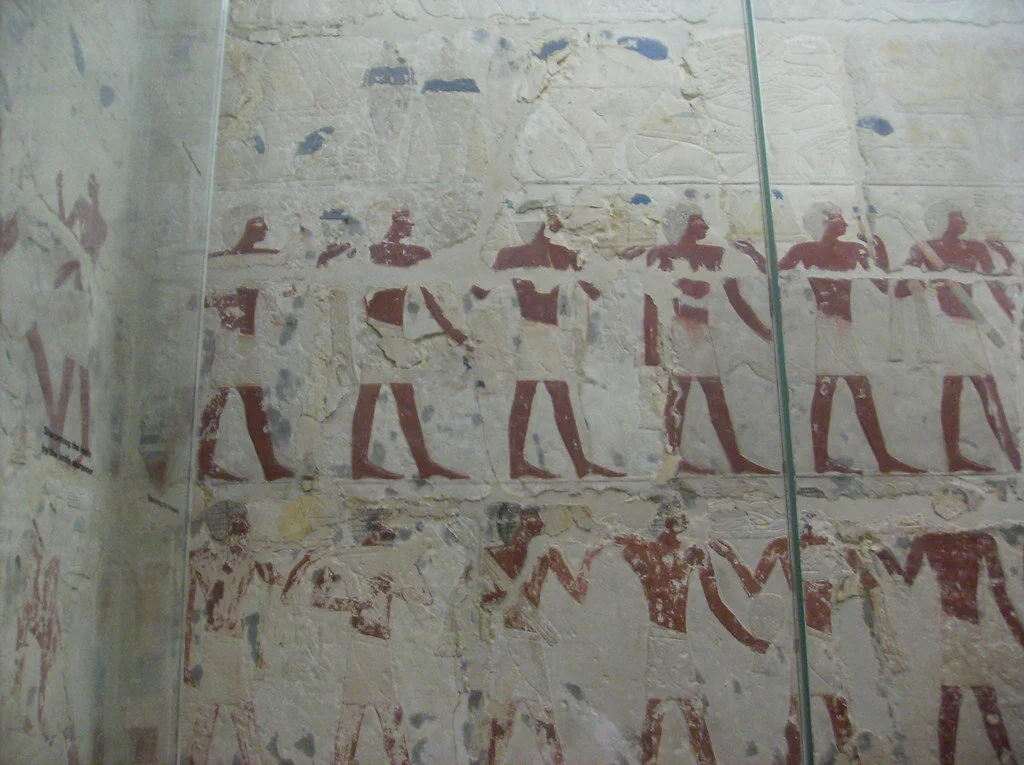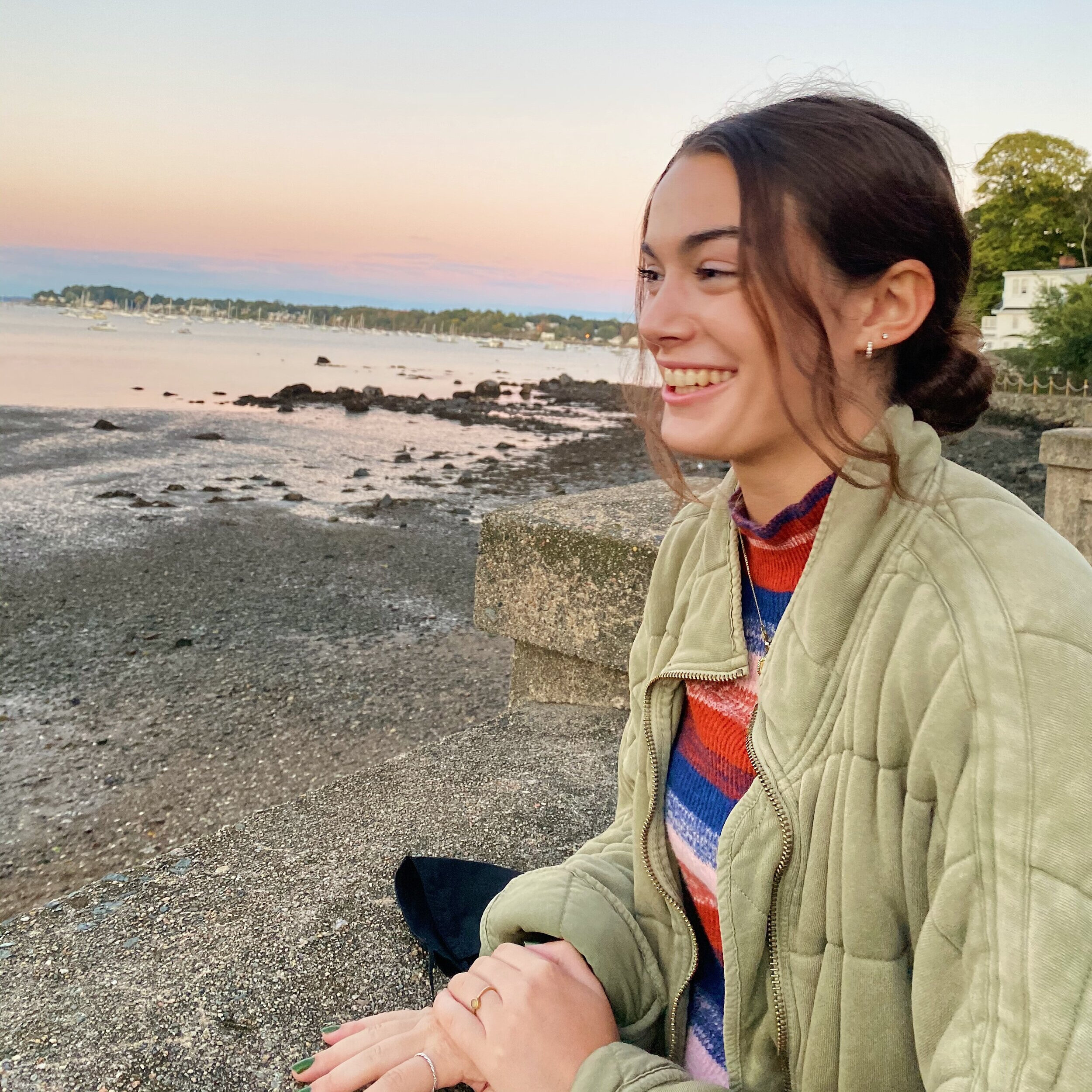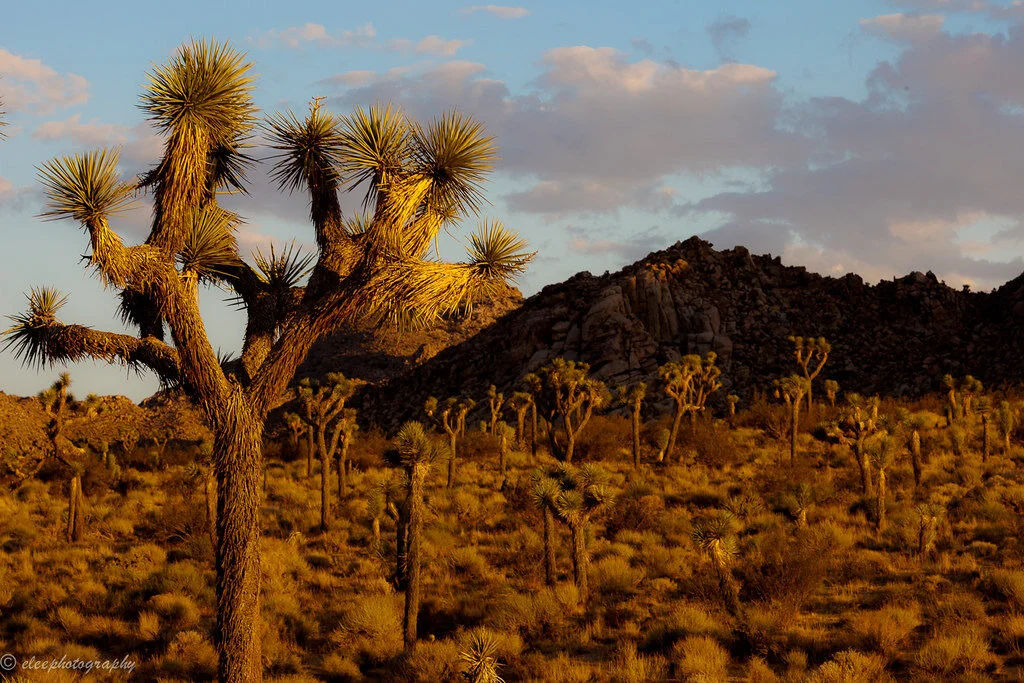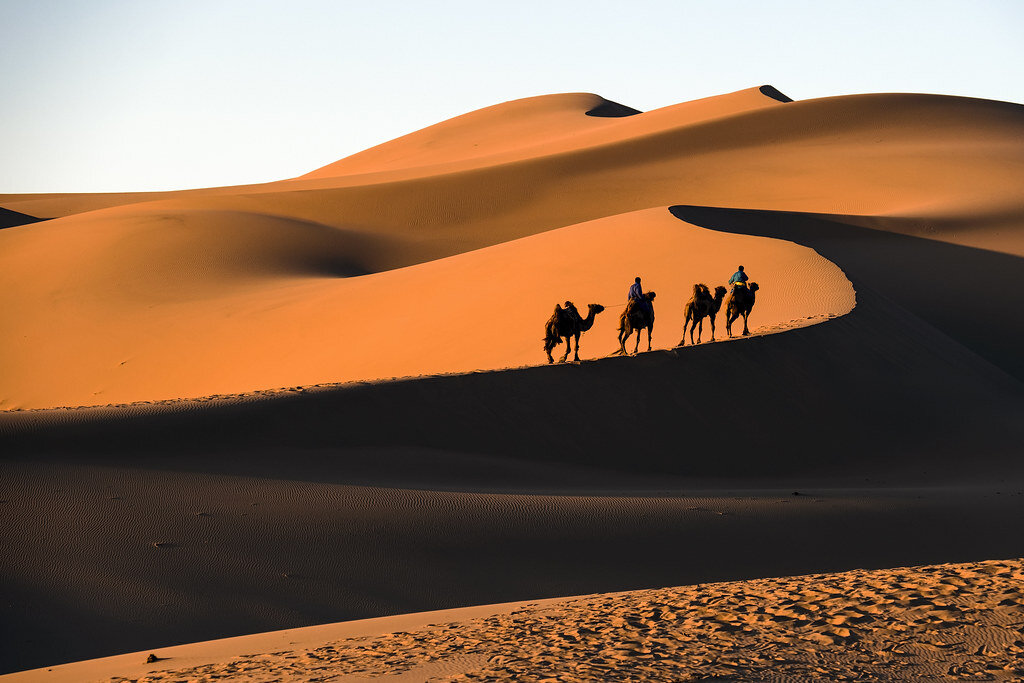For Ties van der Hoeven, the desert isn’t a symbol of emptiness but of hope.
Read MoreEgypt’s Time Capsule: The Fayoum Oasis
A desert adventure that revealed millions of years of history and culture in just one day.
Keriann Slayton
Before the pyramids there were whales, and beyond Cairo there are waterfalls. Once a bounty of prehistoric life, the Fayoum Oasis in Wadi El-Rayan remains rich in resources, culture and history. Cascading water appears as if from nowhere, and dunes and ancient rock rise up to frame the entrance to Wadi El-Hitan, “Whale Valley,” where fossils litter the paths revealing the evolutionary development of massive marine creatures. Describing the region feels like creating an imaginary world for a fantasy novel, yet during my trip there in January 2023, I discovered it to be supremely real and of unique significance in the environmental and cultural memory of Egypt.
The heart-shaped basin spans over 500 square miles and holds stories dating back millions of years. The oasis began forming following the mass drying up of the Mediterranean Sea during the late Miocene period. When the crisis ended and the sea refilled the Nile River ultimately flooded and water flowed into the basin via the Bahr Youssef, transforming the desert expanse into a region of lush vegetation.
During my visit with my family, I immediately understood why Fayoum was home to the first Egyptians to practice agriculture and exists as one of the world’s longest continuously occupied towns. We met our guide for the day at a restaurant in the village center, which could only be characterized as storybook-esque. The open air dining area overlooked a large garden that supplied fresh herbs and produce for the kitchen, and one of the basin’s many lakes loomed in the distance. The view served as a prime introduction to the rich botanical and marine legacy of Fayoum.
Fayoum entered into a golden era during the years 1817–1860 BCE under King Senusret III. The basin began to yield high volumes of rich produce, attracting growing populations and increasing trade with other regions in Egypt and civilizations abroad. Today, the people of the Fayoum live similarly to their ancient ancestors, farming the land and maintaining its reputation as an agricultural cornucopia and cultural time capsule. I saw donkeys pulling carts carrying fruits, vegetables and people from place to place along dusty dirt roads. Wooden fishing canoes dotted the shores of expansive man-made lakes, which were connected by Egypt’s largest waterfall. The entire basin seemed to have been protected from the clattering machinery and dense fog of industrialization.
A fishing canoe in Fayoum. Masondan. CC BY-NC-SA 2.0.
After finishing up at the restaurant, my mother, father, sister and I loaded into a rugged white Jeep that transported us even further back in time. The green farmland and quaint villages soon disappeared in the rearview mirror as we sped deeper into the vast nothingness of the desert, with no visible landmarks to guide our way. Our driver seemed one with the sand, confidently navigating the dunes and never once even hinting at the possibility of getting lost. The Jeep rattled along for quite a while and, for a moment, I thought we may actually reach the edge of the Earth. Eventually, clusters of irregular shapes appeared on the horizon, and we approached the unique rock formations that marked the entrance to Wadi El-Hitan.
Keriann Slayton
Discovered by a team of geologists in 1902, the 37-million-year-old fossils of “Whale Valley” make Senusret III’s reign seem like yesterday. After hopping out of the Jeep for photos in front of a landscape that looked like it was copied and pasted from another planet, we arrived at the visitor’s center, a structure organized as a collection of concrete domes with a relatively bare interior that revealed evolutionary secrets long buried beneath the sand. As we ventured deeper into the UNESCO World Heritage site, we encountered whale skeletons stretching as long as 50 feet, and alongside skulls and spines rested the bones that made up the legs and knees of the prehistoric creatures. The fossils confirmed scientists’ long-held suspicions that whales evolved from terrestrial mammals, transitioning to full-time life in the ocean over the course of millions of years.
The most intriguing were the snake-like remains of the Basilosaurus, the enormous ancient whale whose bite marks were visible in the skulls of some smaller D skeletons. The fossils expose a history of Egypt that long predates the Pharaohs and their Pyramids, a history that predates the Nile itself. As we trekked up and down the dunes, following the fossil-flanked paths, the spirit of the ancient sea made itself undeniable even in the face of the endless desert—it began to rain.
The drizzle, so rare in the Wadi, connected me and my family across time and species to the legacy of the massive marine beings so instrumental in evolutionary history. We explored for a few hours, and when we finally emerged from Whale Valley, we piled back into the Jeep and dune-busted our way to a remote lake, arriving just in time for sunset. Our driver built a fire and made traditional Berber tea, which we drank on the shores until darkness threatened our route out of the desert and we had to depart.
I fell asleep quickly on the nearly three hour drive back to Cairo, dreaming of colorfully painted wooden boats, sledding down sand dunes, and whales with legs.
Keriann Slayton
Keriann is studying International Literary and Visual Studies and History at Tufts University, where she is a student athlete on the softball team and writes for the campus newspaper. Journalism allows her to meet fascinating people, engage with her community, and nurture her long-held passion for storytelling. She loves to fuel her interest in history and culture through travel, and she has visited Spain, Germany, Greece, Egypt, Turkey, and Italy. She hopes to share compelling narratives from around the world in order to better connect humanity across time and cultures
Art Campaign Draws Attention to Detention of Human Rights Student
Coptic Christian University of Bologna graduate student Patrick Zaki has been detained in Cairo for his human rights work. He awaits his trial amidst international protest and artistic efforts to raise awareness of his case.
Patrick Zaki pre-detention in 2020. Egyptian Initiative for Personal Rights. CC BY-SA 4.0.
Cutouts and paintings of a line-drawn young man with “Freedom for Patrick Zaki” scrawled across the chest are plastered on almost every surface around the college-town of Bologna, Italy. Zaki is a Coptic Egyptian master’s student with an Erasmus scholarship to pursue a degree in Women and Gender Studies at the University of Bologna. He also serves as a researcher and advocate for the Egyptian Initiative for Personal Rights, a Cairo-based human rights organization.
Zaki returned to Egypt for a short family visit on February 7, 2020. Upon arriving at the airport in Cairo, he was arrested by the National Security Agency (NSA) of Egypt and detained on the grounds of “disseminating false news” and “inciting to protest” because of an article he published about discrimination faced by Coptic Christians in Egypt. He was taken to an undisclosed location, where, according to Zaki’s lawyer, he was blindfolded, handcuffed, threatened, beaten on the back and stomach, and tortured with electrical shocks during a17-hour-long interrogation about his human rights work and time in Italy.
The drawing on the cutouts was created by artist Gianluca Constantini a few hours after the news of Zaki’s disappearance broke. The illustration was then adopted by Amnesty International’s campaign for his release. It can be seen printed on giant posters at Piazza Maggiore (the central square) and under the Two Towers (Bologna’s main tourist attraction). It was featured prominently in the protests organized by students, human rights organizations and several Italian universities, which have led 100 cities in Italy (including Bologna, Florence, Milan and Naples) to grant Zaki honorary citizenship.
The audience of the drawing and its intended audience depends on where the cutouts are placed. Those placed around college campuses—including 150 filling an entire university library—immediately after Zaki’s arrest were meant to generate awareness and outrage. Now, students in Bologna have known about the case for two years, so the purpose of the cutouts isn’t as much to inform and inflame but to serve as a reminder that the struggle is far from over. The drawings placed in and around popular tourist attractions serve to draw international awareness to the ongoing issue.
Following a robust student movement and international outcry, Zaki was released from prison on December 9, 2021, after 22 months behind bars. The charges against him have not been dropped, and if convicted, he faces up to five years in prison. His hearing has been postponed from February 1, 2022 to April 6. Zaki, who sees the drawn out judicial process as another form of torture, has requested authorization from Egyptian authorities to return to Italy.
Still, Zaki and his family are thankful for the partial victory. When he was released, his mother told journalists, “I’m jumping for joy!”
Zaki, with quiet optimism, says, “The first thing I will do when I return to Bologna is to go and spend the whole day in Piazza Maggiore, meet my friends from the university and eat the exquisite Italian food.”
He is also aware of the drawing and the accompanying journalism.
“Art plays a leading role in advancing the cases of political prisoners and expanding their circles of support by creating awareness of their legal affairs” Zaki said. “My case is living proof: art has played a fundamental part in regaining my freedom, albeit still partially. I would like to thank Gianluca and journalist Laura Cappon who wrote a book about the case illustrated by Constantini for their activism over the past two years and for their support. I hope they continue to use their talents to free other prisoners of conscience.”
To Get Involved
As Zaki’s case continues and the hearing unfolds, artwork by Gianluca and others will likely play a central role in stirring public consciousness and continued investment. To support the case and continue to apply international pressure, you can sign the Scholars at Risk Network (SAR) letter of appeal to release Zaki. The organization also provides a letter template to send to your representatives, requesting they engage with their Egyptian counterparts to work towards freeing Zaki. Social media can also be used to raise awareness by tagging your elected officials in tweets with #FreePatrick.
Izzy Balaban
Izzy is a student at the University of Chicago, currently pursuing a Creative Writing degree with a minor in Human Rights. She is originally from Atlanta, Georgia. When she isn’t writing, she enjoys traveling, trying new food and reading in her hammock.
7 Caves, Temples and Cities Carved in Mountains
These ancient sites were once carved into the surrounding landscape and continue to stand today.
Created at a time when construction vehicles and advanced building tools did not exist, these caves, temples and cities demonstrate the craftsmanship of their ancient peoples all over the world.
1. Petra
Petra, Jordan
Petra, which is also known as “Rose city” for its pink-hued rock carvings, is located between the Red Sea and the Dead Sea in Jordan. The archaeological site is home to several rock-cut temples and tombs, including Al Khazneh, Al-Deir, the Palace Tomb and Urn Tomb. Today this carved site is both a UNESCO World Heritage Site and one of the New 7 Wonders of the World.
2. Longmen Grottoes
Luoyang, China
Longmen Grottoes. Dericafox. CC BY-NC-ND 2.0
Considered one of the best examples of Chinese Buddhist art, the Longmen Grottoes date back to the 5th century. The site contains more than 2,000 artificial caves and over 100,000 Buddhas carved into the limestone cliffs of the Xiangshan and Longmenshan mountains. The Longmen Grottoes cover an area of 30,000 square meters and the statues range in size (0.7 in- 53 ft). The site became a UNESCO site in 2000.
3. Ellora Caves
Maharashtra,India
Ellora Caves: Kailasanatha Temple. DdasedEn. CC BY-NC-ND 2.0
Stretching more than a mile long in distance, the Ellora cave temples date back to the 5th century. Located in Maharashtra, India the 34 caves are dedicated to Buddhism, Hinduism and Jainism. Designated a UNESCO World Heritage site in 1983, the Ellora Caves were hand carved into hillside rock.
4. Mesa Verde National Park
Montezuma, Colorado
Mesa Verde National Park. Usareisetipps. CC BY-SA 2.0
Within Colorado’s Mesa Verde National Park you’ll find the largest archeological preserve in the US. Located in Montezuma County and occupying 81 square miles, the more than 4,000 Pueblo Indian sites date back to the 6th century. As well as 600 cliff carved dwellings including the famous Cliff Palace and Long House. It is frequently visited by mountain lions, elk and bears as well as lizards and snakes which roam the National Park.
5. Goreme National Park
Nevşehir, Turkey
Sculpted by erosion, the Göreme National Park is in Cappadocia, Turkey and contains rock-hewn sanctuaries, houses, monasteries, churches and underground cities. These were inhabited and built in the 4th century, Neolithic pottery and tools found in Cappadocia attest to an early human presence in the region. Clay tablets recovered from the remains of an Assyrian merchant colony at Kanesh are among the oldest written documents discovered in Turkey.
6. Abu Simbel
Aswan, Egypt
An ancient temple complex, Abu Simbel was built by Egyptian King Ramses II to intimidate his enemies and seat himself amongst the gods. The 66-foot seated figures of Ramses are set against the recessed face of the cliff, two on either side of the entrance to the main temple. Carved around their feet are small figures representing Ramses’ children, his queen, Nefertari, and his mother, Muttuy. The temples were unknown to the outside world until their rediscovery in 1813 by the Swiss researcher Johann Ludwig Burckhardt.
7. Lycian Tombs
Anatolia, Turkey
The 4th century Lycian tombs of Turkey contain carved tombs into the side of the region’s mountains, demonstrating a form of ancestral worship. More than a thousand tombs are there today varying in many intricate styles. Some with Romanian columns and other decorative features. The Lycian people believed the dead were carried to the afterlife by winged creatures, hence helping the process by laying them to rest in high cliffside tombs.
Jennifer Sung
Jennifer is a Communications Studies graduate based in Los Angeles. She grew up traveling with her dad and that is where her love for travel stems from. You can find her serving the community at her church, Fearless LA or planning her next trip overseas. She hopes to be involved in international humanitarian work one day.
6 Interesting Facts about the Egyptian Pyramids
There is still so much we don’t know about the history and structure of the Egyptian pyramids. Here are six things that you may not have known about the pyramids and ancient Egypt.
Egyptian pyramids in the sunset. Club Med UK. CC BY-NC 2.0.
The Egyptian pyramids are famous for their buried mummies and treasures, but there are still many secrets waiting to be uncovered about their history. Take a deep look into the ancient pyramids’ past with these six interesting facts.
The seven wonders of the world, Egyptian pyramids. Boston Public Library. CC BY 2.0.
1. Once upon a time, they sparkled.
According to research on ancient texts and found evidence, it is thought that the Great Pyramid of Giza used to shine like glass and sparkle in the sunlight. Ancient Egyptians even called the pyramid “Ikhet,” which translates to “glorious light.” This is mainly because the pyramid was originally covered in polished limestone which reflected light like a mirror and made the pyramids visible from anywhere nearby. What is even more interesting is that the speed of light—299,792,458 m/s—are also the exact coordinates of the Great Pyramid of Giza, which is at 29.9792 degrees north, 31.1342 degrees east. Spooky? Definitely.
Entering the pyramid. Trey Ratcliff. CC BY-NC-SA 2.0.
2. Many of them were robbed.
A lot of the unknown history of the pyramids can be blamed on tomb robbers. Tomb robbing was a serious problem in ancient Egypt because robbers targeted the tombs for looting—even Kings’ tombs were broken into. It was the Egyptian belief that everything buried with you was taken into the afterlife, so Kings and Queens were buried with unimaginable amounts of riches. It was also very common for people to steal from their ancestors’ tombs —some even dumped the body and stole the sarcophagus. Egypt was a cashless society until the Persians came in 525 BCE, so those who stole from the tombs would have had to trade their stolen goods to higher, corrupt officials. Those caught would be executed for the offense.
The Great Pyramid of Cheops. Boston Public Library. CC BY 2.0.
3. We still don’t know how they were built.
Although the pyramids are over 4,000 years old, professionals still don’t understand how the ancient Egyptians managed to build the pyramids without advanced technology. The most accepted theory is that they used ramps to bring materials to the top, which has been proven by a recent discovery. Researchers in Egypt discovered a 4,500-year-old ramp used to haul alabaster stones out of a quarry. The ramp system dates back to Pharaoh Khufu, who built the Great Pyramid of Giza. However, the way in which the ancient Egyptians built the pyramids is still a mystery because the pyramids were not made of alabaster, which is what the discovered ramp helped to move.
Khufu’s Great Pyramid. Bernt Rostad. CC BY 2.0.
4. There is a secret chamber in the Great Pyramid of Giza (Khufu’s Pyramid).
Weighing in at 5,750,000 tons, the Great Pyramid is simply a feat of architecture. To add further to the mystery, a previously unidentified chamber in the Great Pyramid was discovered in 2017 when physicists used the by-products of cosmic rays to reveal an at least 100-foot long void. The mysterious space’s dimensions are similar to the pyramid’s Grand Gallery, which is the corridor that leads to the burial chamber of Pharaoh Khufu. What lies within the space is still unknown, as well as its purpose. Scientists hope to find out more about this newly discovered area and what it was used for.
Tomb of Perneb, carving of offering bearers. Peter Roan. CC BY-NC 2.0.
5. It was tradition for the living to share food with the dead.
Ancient Egyptians believed that tombs were eternal homes for the mummified bodies and the ka spirits that lived within them. Each tomb had a tomb-chapel where families and priests could visit the deceased and leave offerings for the ka, while a hidden burial chamber protected the mummified bodies from potential harm. Visitors offered food and drink to the dead daily, and once the offerings were consumed by the ka, the living were free to eat and drink their offerings. The Beautiful Feast of the Valley was an annual festival of death and renewal where families spent the night in the tomb with their ancestors and feasted with them in celebration of their lives.
A statue ofNefertiti in the Altes Museum in Berlin. George M. Groutas. CC BY 2.0.
6. Egyptian women and men had equal rights.
In ancient Egyptian times, men and women of the same social class were treated as equals in the eyes of the law. Women could sell, own, earn, buy and inherit property. If widowed or divorced, women could raise their own children. Women could also bring cases before a court. Overall, women could legally act on their own and were responsible for their own actions. Although everyone in ancient Egypt was expected to marry, wives still had an important, equal and independent role in their marriage.
Isabelle Durso
Isabelle is an undergraduate student at Boston University currently on campus in Boston. She is double majoring in Journalism and Film & Television, and she is interested in being a travel writer and writing human-interest stories around the world. Isabelle loves to explore and experience new cultures, and she hopes to share other people's stories through her writing. In the future, she intends to keep writing journalistic articles as well as creative screenplays.
Egyptian Activist Brings About a #MeToo Moment
Nadeen Ashraf, creator of the Instagram page “Assault Police,” warned fellow women about men accused of sexual assault. Now, she is working to change the society that produces the perpetrators.
Nadeen Ashraf has received more death threats than she can count. Her infamy began with an Instagram page named “Assault Police” and culminated in a nationwide movement. It broaches a taboo subject in Egyptian society: sexual violence. The Instagram page provides women an outlet to express their stories of sexual assault and harassment while giving guidance on how to navigate Egyptian society as a survivor. The threats received by Ashraf demonstrate the opposition that activist women face. It also shows how necessary Egypt’s #MeToo moment is.
Ashraf joins a worldwide cadre of young activists who use social media to promote inclusivity. At 22 years old, she belongs to the first generation that was born and raised with social media. “I’ve been active on social media since I was 9 years old,” Ashraf said in an interview with Egyptian Streets, “and I’ve been an avid follower of internet trends and social media for as long as I can remember.” This gives her an edge in crafting social media campaigns that reach women, old and young, across Egypt. So far, Assault Police has over 200,000 followers.
Ashraf started the account in a rage late one night. A fellow student at the American University in Cairo accused Ahmed Bassam Zaki of sexually harassing and blackmailing women on social media, but within days, the post disappeared. This was one of many instances. “I witnessed women first coming forward about being harassed by him on our university’s unofficial Facebook group around 2018, only to be silenced by having their posts deleted later,” Ashraf says. She soon created Assault Police to warn other women about Zaki. From there, the growth was explosive.
Nobody predicted such widespread success, least of all Ashraf herself. “I initially expected it to get reported and shut down by Instagram within days of its creation,” she says. Such was the fate of most social media posts calling out sexual harassment. Assault Police comes, though, at a time when a new generation of young activists are using social media to advocate for societal change. Being tech savvy is necessary when authorities arrest activists on social media for “indecency” and “debauchery” while sexual predators roam free.
A protest at the University of Cairo. Hossam el-Hamalawy. CC BY-SA 2.0.
Ashraf faces an uphill battle in shifting widely held cultural norms. Though sexual harassment was criminalized in 2014, pervasive misogyny means victims of sexual abuse are rarely taken seriously. Moreover, a climate of stigma and shame deters many victims from accusing their aggressor publicly. Roughly 75% of men—and 84% of women—believe a woman who dresses provocatively deserves to be harassed.
“My generation often takes credit for jump-starting change all over the world,” Ashraf said, “but I kept seeing this gap within my community of young women trying to speak out against sexual harassment, and never being taken seriously.” Assault Police provided one of the only venues where victims could tell their stories and seek help without bringing Egyptian society’s scorn upon them. The groundswell of support converted the fledgling account into a nationwide movement, one that is changing the conversation about sexual violence. Nevertheless, there is much work to be done.
The case of Aya Khamees demonstrates the challenges the movement faces. When Khamess first told the police she had been gang raped, they did nothing. Only after weeks of online campaigning did the authorities arrest five suspects, but the delay allowed at least two suspects to flee the country. In a Kafkaesque turn, authorities charged Khamees herself in the trial on charges of prostitution, drug use and “violating family values.” The trial is yet to be decided, but many women understood the message. Their lives would be easier if they stayed quiet.
Still, the moment represents a #MeToo moment for the country. For the first time, women sharing stories of sexual assault are being taken seriously, and men are beginning to face consequences. After Ashraf repeated accusations against Ahmed Bassam Zaki on the Assault Police page, he was arrested by authorities.
A protest against systemic sexism. Hossam el-Hamalawy. CC BY 2.0.
For the time being, Ashraf continues passionately against this misogynistic system. So far, Assault Police has been run by her alone, but facing down such a mammoth social issue requires more than one committed activist. “I want to expand from an online platform to a full-time organization,” Ashraf said, “that can support survivors in real time by connecting them to professionals, legal aid and therapy.” Assembling such a team is no easy task, but then again, nothing about Assault Police was ever easy. And look at its success so far.
Michael McCarthy
Michael is an undergraduate student at Haverford College, dodging the pandemic by taking a gap year. He writes in a variety of genres, and his time in high school debate renders political writing an inevitable fascination. Writing at Catalyst and the Bi-Co News, a student-run newspaper, provides an outlet for this passion. In the future, he intends to keep writing in mediums both informative and creative.
8 Surprisingly Vibrant Desert Destinations
Deserts are much more than the beating sun and rolling sand dunes we often picture. These eight destinations showcase the incredible natural beauty of the desert, from salt flats and chalk formations to mountains and glaciers.
Though deserts are often thought of as just hot, dry expanses of sand, they come in a variety of climates and landscapes and hold some of the world’s most fascinating natural formations. Deserts “are areas that receive very little precipitation,” making them arid but not necessarily hot and sandy. Many deserts are mountainous, and others are large expanses of rock or salt flats. Though their arid environment makes water in deserts scarce, they are far from lifeless. Plants and animals, including humans, have adapted to desert life. One-sixth of the Earth’s population lives in deserts, which are found on every continent.
These eight desert destinations range from freezing to boiling in temperature and are all unique, with their own attractions and plant and animal life. Each of these stunning deserts is worth a visit, and they may change your opinion of the desert as a stark, lonely place to one of beautiful landscapes blooming with culture, history and life.
White and Black Deserts, Egypt
Located just a few hours from Cairo, Egypt’s White and Black deserts are two stunning and underappreciated visitor attractions. The White Desert is located in the Farafra Depression, a section of Egypt’s Western Desert, and boasts some of the most unique geological landscapes in the country. Incredible wind-carved white chalk formations rise from the sand in the shapes of towering mushrooms and pebbles, giving the White Desert its name. The White Desert stretches over 30 miles, and the most visited area is the southern portion closest to Farafra. To the north of the White Desert is the Black Desert, where volcanic mountains have eroded to coat the sand dunes with a layer of black powder and rocks. In the Black Desert, visitors can climb up English Mountain and look out over the landscape. The Egyptian Tourism Authority recommends booking a tour to explore the deserts in depth, and travelers can even stay in the White Desert overnight.
Joshua Tree National Park, California
Joshua Tree National Park in Southern California is where two different desert ecosystems meet. Parts of the Mojave and the Colorado deserts are both found in Joshua Tree, along with a distinctive variety of plant and animal life. The Joshua tree, the park’s namesake, is the most identifiable of the plants, with its twisted, spindly branches and spiky clusters of greenery. Some of the park’s most popular attractions are Skull Rock; Keys View, a lookout with views of the Coachella Valley and the San Andreas Fault; and Cottonwood Spring Oasis, which was a water stop for prospectors and miners in the late 1800s. Joshua Tree National Park has roughly 300 miles of hiking trails for visitors to explore. The park is open 24 hours and can be visited at any time of the year, but visitation rises during the fall due to the cool weather and is at its height during the wildflower bloom in the spring.
Atacama Desert, Chile
Trips to the Atacama Desert in northern Chile are likened to visiting Mars on Earth. The dry, rocky terrain is so similar to that of Mars that NASA tests its Mars-bound rovers here. The Atacama Desert, the driest desert on Earth, spans over 600 miles between the Andes and the Chilean Coastal Range. Some weather stations set up in the Atacama have never seen rain. Despite its dryness, the desert is home to thousands of people, as well as plants and animals. People have been living in the Atacama Desert for centuries; mummies were discovered in the Atacama dating back to 7020 B.C., even before the oldest known Egyptian mummies. Attractions in the Atacama Desert include El Tatio geyser field, the Chaxa Lagoon, the Atacama salt flats, and sand dunes over 300 feet tall. The Atacama Desert is also said to have some of the clearest night skies in the world, making it perfect for stargazing. It is best to avoid a trip to the Atacama during the summer months, as the high temperatures make for a sweltering visit.
Salar de Uyuni, Bolivia
The world’s largest salt flat, Salar de Uyuni, covers 3,900 square miles in the southwestern corner of Bolivia. Salar de Uyuni is so large it can be seen from space and holds an estimated 10 billion tons of salt. Beneath the salt flat is approximately 70% of the world’s lithium reserves. This lithium is carefully extracted and used for powering laptops, electric cars and smartphones. Salar de Uyuni is surrounded by scenic lakes, geysers and rock formations, and is one of the world’s most beautiful and untouched natural landscapes. Tours of Salar de Uyuni take visitors to the Valley of Rocks; Morning Sun, which is home to geysers and mud pots; Colchani, a salt-processing village; and the Polques Hot Springs, where travelers can soak in warm thermal water. The landscape of Salar de Uyuni changes based on the seasons, so travelers should plan their visits around what they want to see. From July to October, access to all sites of Salar de Uyuni is unrestricted, but during the rainy season from December to April, visitors may be able to witness the salt flat’s famous mirror effect, where a thin layer of water over the salt transforms the land into the world’s largest mirror.
Tanque Verde Ranch, Arizona
Located just outside of Tucson, Arizona, near Saguaro National Park and the Rincon Mountains, Tanque Verde Ranch gives visitors “the ultimate dude ranch experience.” The ranch sprawls over 640 acres and stocks over 150 horses. Visitors to the ranch can get a real-life cowboy experience, including horseback riding and team penning. Riders of all experience levels will find something to do at Tanque Verde, where visitors can take beginning, intermediate and advanced lessons and then go on a sunrise or sunset trail ride through the Arizona desert. Tanque Verde Ranch offers kids’ riding activities too, as well as activities for non-riders such as yoga, mountain biking, fishing, swimming and pickleball. Visitors should pack long pants and closed-toe shoes if they plan to ride, and casual wear is appropriate for all non-riding times. Trips to the ranch usually last around four days, and visitors stay on the property. Tanque Verde Ranch is open to visitors year-round.
Gobi Desert, Mongolia
Spanning most of southern Mongolia and its border with China, the Gobi Desert contains stunning views and years of history. The region was once populated by dinosaurs, and some of the best-preserved fossils in the world were found near the Flaming Cliffs of Bayanzag. The Gobi Desert showcases a variety of natural beauty, from towering sand dunes to incredible white granite formations. Dry desert plants that come to life after rain make the Gobi unique, as well as ”saxaul forests” made up of sand-colored shrubbery. Visitors to the Gobi Desert should explore the Khongor Sand Dunes, an area that offers rocky and mountainous terrain in the south, dry and barren terrain in the center, and several oases in the north. Other major attractions are the Flaming Cliffs of Bayanzag, where red clay seems to glow in the sun, and the Gobi Waterfall, which looks like a city in ruins but is a completely natural formation. The best time to visit the Gobi Desert is either in late spring or in autumn, when the weather is neither too hot nor too cold.
Nk’Mip Desert, Canada
Also called the Okanagan Desert, Canada’s Nk’Mip Desert contains the most endangered landscape in Canada. Located in Osoyoos in British Columbia, the Nk’Mip Desert Cultural Center is a 1,600-acre area of the Okanagan Desert managed by the Osoyoos Indian Band, and is the only fully intact area of desert in Canada. The desert is situated in a semiarid microclimate. The cultural center was designed to be eco-friendly and resembles the traditional winter homes of the Osoyoos Indian Band. Visitors can explore the desert on walking trails, which are surrounded by sage, prickly pear cactuses and antelope brush, as well as sculptures of desert creatures and native peoples by Smoker Marchand. The trails take visitors through a traditional Osoyoos village, where they will find a traditional sweat lodge and pit house. Many visitors prefer to explore Nk’Mip Desert in the summer due to the region’s relatively cold winters.
Patagonian Desert, Argentina and Chile
The Patagonian Desert is South America’s largest desert and the seventh-largest in the world. It covers parts of southern Argentina and Chile, and is a cold desert, sometimes reaching a high temperature of 68 degrees Fahrenheit. The Patagonian Desert is home to two national parks: Torres del Paine National Park in Chile and Los Glaciares National Park in Argentina. Torres del Paine and Los Glaciares aren’t typical desert environments, but since the Patagonian is a cold desert, its landscape is different from that of most deserts. Before the Andes were formed, the Patagonian Desert was likely covered by temperate forests, so the region containing the desert, Patagonia, is extremely ecologically and geographically diverse. Torres del Paine National Park is known for its towering granite structures, which were shaped by glaciers. Los Glaciares is home to large glaciers, as well as scenic mountains, lakes and woods. The Cueva de las Manos, or “Cave of Hands,” is a series of caves in Argentinian Patagonia which are filled with paintings of hands dating back to 700 A.D., likely made by ancestors of the Tehuelche people. Tehuelche people live in Patagonia today, some still following a nomadic lifestyle. The best time to visit Patagonia is generally said to be in the summer (December to February), when the days are warm and the fauna is in full bloom, but there are merits to exploring the area at all times of year.
Rachel Lynch
Rachel is a student at Sarah Lawrence College in Bronxville, NY currently taking a semester off. She plans to study Writing and Child Development. Rachel loves to travel and is inspired by the places she’s been and everywhere she wants to go. She hopes to educate people on social justice issues and the history and culture of travel destinations through her writing.
Sixpenny Globe - Around the World on the Cheap
After obtaining a college education and trudging through a year of minimum-wage jobs and unpaid internships, Kelsey Ogden and Kristen Refermat agreed that some extra spice was needed in their lives. For many, the remedy for such a dilemma might be a simple tropical holiday - complete with frozen margaritas and white sanded beaches. This however was not the case for these two. Instead, Kristen and Kelsey quit their jobs and bought two round-the-world tickets; on credit. Through their travels Sixpenny Globe was born - a new web series documenting their budget-traveling, hitchhiking, couchsurfing escapades around the world and back.



